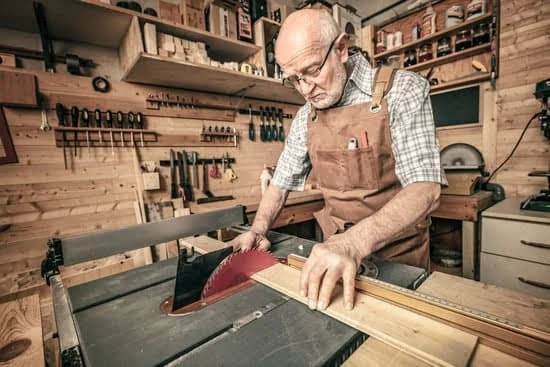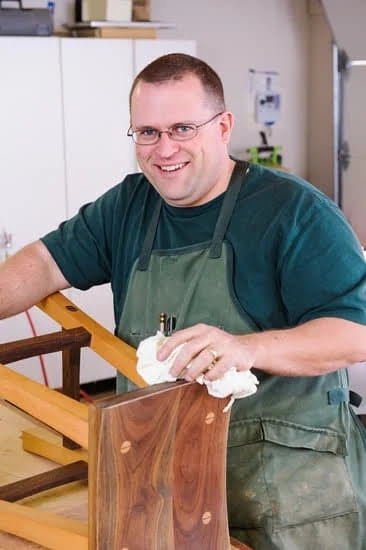There are plenty of easy woodworking projects for kids that can teach them the basics of woodworking and carpentry. Starting with a simple project, like a birdhouse or a toy box, can help them develop the skills they need to move on to more complicated projects as they get older.
Some easy woodworking projects for kids include:
• Birdhouses
• Toy boxes
• Birdfeeders
• Benches
• Tables
• Shelves
All of these projects are relatively simple, and can be completed with just a few basic tools. They also teach kids important skills like measuring, sawing, and drilling.
When choosing a project for your child, be sure to choose one that is age-appropriate. Some projects, like building a table, may be too difficult for younger children. Start with something simple, like a birdhouse or a toy box, and work your way up to more difficult projects as your child gets older.
If you’re not sure where to start, there are plenty of resources available online to help you get started. There are also plenty of books and magazines dedicated to woodworking for kids.
With a little bit of planning and preparation, you can help your child learn the basics of woodworking and carpentry, and have some fun in the process.
Types Of Woodworking Planes
There are many different types of woodworking planes, each with its own specific purpose. Some planes are designed to smooth the surface of a piece of wood, while others are used to create specific types of edges or to remove specific amounts of wood.
The most basic type of woodworking plane is the smoothing plane. This plane is used to remove small amounts of wood and to create a smooth surface. The smoothing plane has a flat bottom and a narrow blade that is used to cut the wood.
The next most basic type of woodworking plane is the jack plane. The jack plane is used to remove larger amounts of wood than the smoothing plane. It has a wider blade than the smoothing plane and a curved bottom that allows it to cut more deeply into the wood.
The third most basic type of woodworking plane is the jointer plane. The jointer plane is used to create straight edges and to remove large amounts of wood. It has a wider blade than the jack plane and a straight bottom that allows it to cut more deeply into the wood.
There are also a variety of specialty planes that are used to create specific types of edges or to remove specific amounts of wood. For example, the rabbet plane is used to create rabbet joints, while the chisel plane is used to remove wood from square corners.
The most important thing to remember when using a woodworking plane is to use the correct plane for the job. The smoothing plane should only be used to smooth the surface of a piece of wood, not to remove large amounts of wood. The jack plane should only be used to remove larger amounts of wood, not to smooth the surface. And the jointer plane should only be used to create straight edges and to remove large amounts of wood, not to smooth the surface.
Penn State Woodworking Deer Grunt Kit How To Make
A Deer Grunt
The deer grunt kit from Penn State Woodworking is the perfect way to attract deer to your hunting location. The kit includes a plastic deer call, an instructional CD, and a carrying case. The deer grunt call is easy to use and produces realistic deer grunts that will bring deer within range. The instructional CD provides tips on how to use the deer call and how to set up your hunting location for the best results. The carrying case makes it easy to take the deer grunt kit with you on your hunting trips.
The deer grunt kit is a great way to attract deer to your hunting location. The deer grunt call is easy to use and produces realistic deer grunts that will bring deer within range. The instructional CD provides tips on how to use the deer call and how to set up your hunting location for the best results. The carrying case makes it easy to take the deer grunt kit with you on your hunting trips.
Woodworking Support Stand
This woodworking support stand is perfect for anyone who likes to work with wood. It is easy to set up and use, and it provides sturdy support for your workpieces. The stand is made from durable steel and wood, and it has a powder-coated finish to protect it from rust and corrosion. It also comes with a convenient carrying case, so you can take it with you wherever you go.
The stand has three adjustable levels, so you can choose the height that is best for you. It also has a built-in stop, so you can easily clamp your workpieces in place. And, the stand folds up for easy storage.
Woodworking Person
as
There are many woodworkers in the world, but there are also many different types of woodworkers. In order to better understand the woodworking community, it is important to understand the different types of woodworkers.
The first type of woodworker is the hobbyist. This person is typically someone who enjoys working with wood, but does not make it their profession. The hobbyist often has a small workshop in their garage or basement and they enjoy making small projects, such as birdhouses or cutting boards.
The second type of woodworker is the semi-professional. This person is someone who makes a living working with wood, but they are not their sole source of income. The semi-professional typically has a larger workshop and they are able to make a wider variety of projects.
The third type of woodworker is the professional. This person is someone who makes a living working with wood and their sole source of income is from woodworking. The professional typically has a very large workshop and they are able to make a wide variety of projects, including furniture and cabinets.
The fourth type of woodworker is the DIYer. This person is someone who does not have any formal training in woodworking, but they are able to build things by following instructions. The DIYer typically has a small workshop and they often build things such as furniture or cabinets.
The fifth type of woodworker is the woodturner. This person is someone who specializes in turning wood on a lathe. The woodturner typically has a small workshop and they often make things such as bowls or pens.
The sixth type of woodworker is the woodcarver. This person is someone who specializes in carving wood. The woodcarver typically has a small workshop and they often make things such as bowls or pens.
The seventh type of woodworker is the lumberjack. This person is someone who specializes in cutting down trees and processing lumber. The lumberjack typically has a large workshop and they often make things such as furniture or cabinets.

Hi everyone! I’m a woodworker and blogger, and this is my woodworking blog. In my blog, I share tips and tricks for woodworkers of all skill levels, as well as project ideas that you can try yourself.






